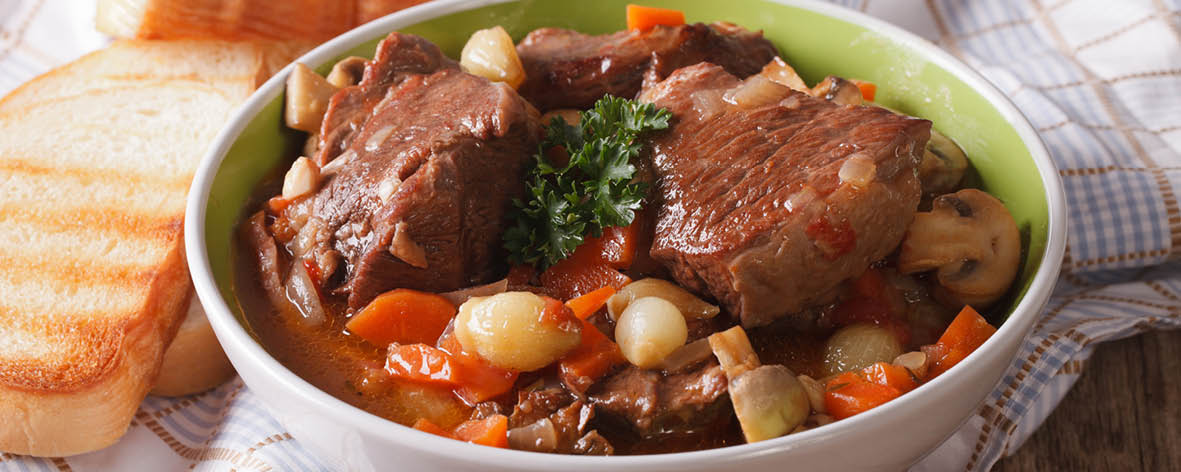Cooking budget-friendly beef cuts to perfection … our top tips

If you keep an eye on our Weekly Specials and our Mad Monday promotions, you will have seen cuts of beef, like gravy beef, topside roast, blade roast and silverside. These budget-friendly cuts can be turned into a delicious family meal. Read on to find out more.
If you enjoy beef, you will no doubt be familiar with beef fillet, fillet steak, and porterhouse. These cuts are ideal for pan searing or grilling over an open flame and eating medium rare, however they are more expensive so if you’re looking for ways to enjoy beef without breaking the budget, you should try the so-called ‘secondary’ cuts of beef. With names like gravy beef, topside roast, blade roast and silverside, these cuts, from the muscular parts of the animal – the shoulder, top of the leg and neck – all have a high collagen content and lend themselves to long slow cooking methods such as braising. This breaks down the connective tissue, tenderises the meat and develops rich flavours.
Here are our top tips for each cut:
Chuck – chuck is from the shoulder of the cow, which gets a lot of exercise. Chuck steak requires a little more preparation time than meat from a prime cut. It has cartilage and fat running through it, and benefits from being marinated. It can then be grilled to medium rare. Otherwise it can be cut into 3 cm pieces, quickly browned and then used in a braise or slow cooked in a casserole, curry, or a pie.
Try these ideas for chuck steak from our recipe collection:
Blade roast – blade also comes from the shoulder. A blade roast is highly marbled and includes tough connective tissue, making it ideal for a pot roast. First season and then, in a heavy-based casserole pot, sear the meat well on all sides, rendering the fat and sealing in the juices. Remove the meat to a plate and sauté some onions and garlic, and then add vegetables like peeled carrots, parsnips, and potatoes that can slow cook alongside the meat. Return the meat to the pot and pour in beef stock to almost cover, add some bay leaves, peppercorns, and a sprig of thyme, bring to a simmer and then roast, covered, at 160C for 4 or more hours or until the meat is falling apart.
Blade is also excellent for making a ragu:
Silverside – taken from the hind quarter of the animal, between the rump and leg. Corned silverside should be rinsed to wash away the brine to avoid a very salty taste. It should be simmered very gently in water with carrots, celery, some bay leaves, a few cloves, and peppercorns, for about 2 hours. Don’t allow the water to boil as this will make the silverside dry and stringy. Drain, serve with the vegetables and some mustard or horseradish.
Or try this variation on the traditional silverside:
Corned silverside in broth with salsa verde
Gravy beef – gravy beef comes from the hind leg, the front leg and also the neck of the cow. It is rich in flavour and best slow-cooked or braised, so this is also a great cut for casseroles, braises or curries.
Try these from our recipe collection:
Topside roast – Topside is a large, lean cut. Like silverside, topside is taken from the hind quarter of the cow, between the rump and leg. The topside muscle, being both lean and quite tender, is excellent for roasting or slow cooking. A 2kg roast can be cooked at 180C for about 1 ½ hours for medium. Baste part way through to prevent drying out. It should be thinly sliced and served with all the trimmings – roast potatoes and veggies, gravy and horseradish. Topside is also great slow-cooked – try this pot roast recipe from our collection:

